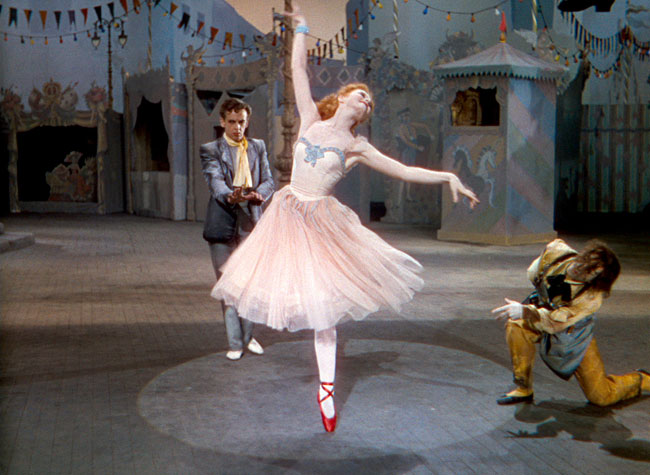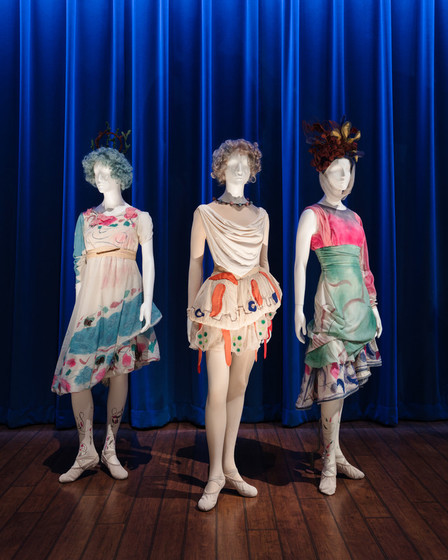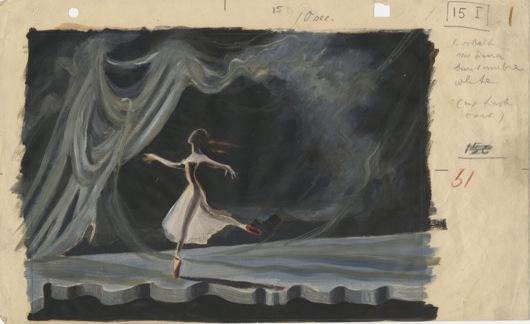Designing the for the stage is a challenge that has long intrigued artists. This Saturday, September 2, as part of our day-long event Dapper Day+LACMA Celebrate Chagall, a screening and discussion will delve into costume design for dance. A rare 35mm projection of The Red Shoes will be followed by a conversation with movement director Stephen Galloway, costume designer Bobi Garland, and artist and designer Stacia Lang.
This screening is presented in conjunction with the upcoming live performances of Matthew Bourne's The Red Shoes at The Music Center’s Ahmanson Theatre, a co-presentation of Glorya Kaufman Presents Dance at The Music Center and Center Theatre Group.
Bobi Garland, a contributor to the Chagall: Fantasies for the Stage exhibition and longtime friend of LACMA, answered questions in anticipation of Saturday’s program.

What are some of the unique challenges of designing costumes for dance?
When designing costumes for any medium, story guides the design. Dance is a bit more complicated because movement is the master and costumes must not get in the way. It is quite a magical paradox. The costumes contribute to the appearance of weightlessness while needing to last through the rigors of multiple performances and sometimes multiple dancers of slightly different sizes. Perhaps the greatest challenge is the need to support the safety of the dancer. Not one stitch can be out of place. And let’s not forget the stage and the audience—they are designed to be seen by the last row in the house and fill what can be an enormous stage. That is a lot to ask of every single costume.
How are these challenges resolved in The Red Shoes?
Costumes for The Red Shoes have a “fairy godmother”—film. Costumes for film are created for the moment and even with financial constraints, there is usually enough in the budget to create “multiples” for important costumes. If something tears during a performance, they simply stop filming and bring out one of the “multiples.” But with dance, any time you create costumes, movement and safety can be on a collision course. I can't wait to see how Matthew Bourne's production at the Ahmanson solves these problems. Stacia Lang and Stephan Galloway can speak to this on Saturday after the screening of The Red Shoes.
What were some of the innovations Marc Chagall brought to the practice?
Chagall painted the costumes on the dancers during fittings; that is so exciting! Fittings are such an intimate conversation between costume designer and dancer—just imagine that experience. It was the ultimate collaboration of the painter and performer, or dreamer and the dream.
Also, I am not sure how effectively papier-mâché had been used before Chagall, but to me his use of it seems revolutionary. I think we see that influence all the way through to Julie Taymor’s Lion King. He used materials that were innovative at the time. LACMA costume and textiles installation specialist Melinda Kerstein told me that she found disintegrated foam inside the costumes as she dressed the mannequins in Chagall: Fantasies for the Stage, which she did so perfectly.

What are interesting connections that visitors should look for between The Red Shoes and the Chagall exhibition?
The entire film is an homage to ballet and to The Ballets Russes, which influenced Chagall when he was an apprentice in St. Petersburg. We have to be grateful to The Red Shoes filmmakers Michael Powell and Emeric Pressburger for this gift. The opportunity to see Leonid Massine’s performance as the Shoemaker is priceless! It is an exclamation point to the dominance of modernism in art, dance, and film.
Step out in style at LACMA on Saturday, September 2, as DAPPER DAY + LACMA celebrate the spectacular exhibition Chagall: Fantasies for the Stage. It’s a day and night full of art, fashion, film, music, and dancing. From vintage-inspired classics to chic, contemporary looks, you’re invited to bring your own style to the party.



